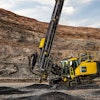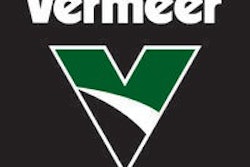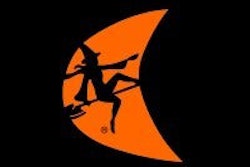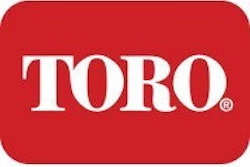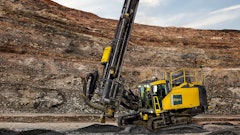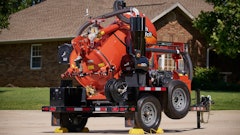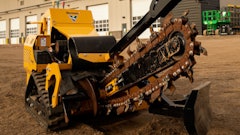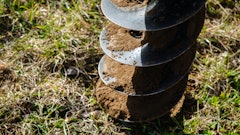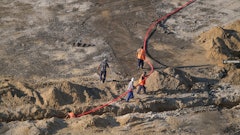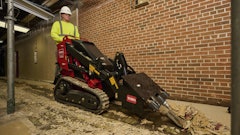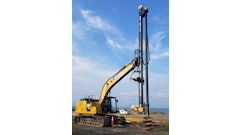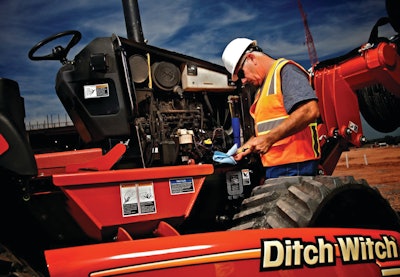
If trenching is a significant part of your business, you understand the benefits — and challenges — associated with purchasing a used trencher. A quality, low-hour used machine has definite advantages over the cost of a new model.
“A used trencher can have plenty of useful life even if it doesn’t look brand new,” says Matt Collins, trencher product manager, the Ditch Witch organization. “There are used trenchers working very effectively in the field with dings, dents, scratches and bad paint. The success of these used machines is due to a strong engine and a properly maintained working end.”
However, when purchasing a used trencher, there are precautions you should take to ensure the machine you buy has sufficient life to last well into the future.
Start with a Working End Walk-around
“There is a long checklist of items to inspect when evaluating a used trencher for purchase,” says Jon Kuyers, global product manager for the underground business segment of Vermeer Corp. “It’s always wise to start at the tip of the trencher boom and work through to the engine.”
Looking at the boom tip, Kuyers recommends moving the end idler from side to side to assess any wear on the bearings. The end idler can often be tightened, but if not, it’s time to replace the bearings.
From there, check the main part of the boom. Look at the wear strips on both ends. (Many are reversible, depending on the size of the trencher.) If wear strips show significant wear, they will need to be replaced. If the wear strips are worn through, Kuyers says there will be bigger problems down the road.
Check the boom itself. If there is significant wear on one side of the boom or the other, the entire boom assembly could be bent. This happens when operators engage in a tight radial turn while digging in hard material at shallow depths, Kuyers explains.
Digging in rocky ground or frost with a trencher that has not been properly maintained can cause the head shaft pivot to wear out. Inspect the bushing in the pivot. If it needs to be replaced or if the bushing has worn through, it will lead to greater problems with the pivot area in the future.
Moving closer to the tractor, inspect the auger sprocket and bearings. The auger sprocket teeth are typically square shaped. If the auger teeth are worn to a fine point, the sprocket could be damaging the digging chain and will need to be replaced.
Look to see if the augers are rolled over. Do they show excessive wear? Can you run the chain smoothly? Is there any oblong movement? If so, the auger shaft could be bent, which could lead to bearing failure.
With the machine turned off, move the auger in a side-to-side motion. If there is a lot of play when you pull or push the auger, the bearings are worn significantly and will need to be replaced, says Kuyers.
From the auger point, evaluate the main head shaft sprocket. If it shows wear, it will need to be replaced.
Check the Chain and Teeth
The next area to inspect is the digging chain. Inspect the teeth for excessive wear.
“There is no doubt that all the ground-engaging parts of a trencher are a large expense of the machine,” says Bob Wren, Toro trencher product specialist. “Digging teeth need to be replaced from time to time. It takes horsepower to run the digging chain. Working with worn teeth slows production and is not cost effective.”
Move the chain from side to side (not front to back) and watch for snaking in the chain. If the boom is at maximum chain adjustment and the chain still sags significantly, replacement will be required.
Also inspect the chain rollers. “A good indicator of the wear on a chain can be found by inspecting the condition of the rollers on the chain and any wear to the side bars of the chain,” Wren points out.
“Check for significant wear on the sidebars of the chain where it pivots around the end roller and the sprocket,” says Kuyers. “If more of a radius appears than a straight edge on the bottom of the chain, there has been significant wear on that chain. The rollers should be round and cylindrical. If they show wear like an hour glass, it’s only a matter of time before the chain fails.”
Like most replacement parts, digging chains vary in price and quality. Wren suggests looking past the initial purchase price and asking how the chain is made, what type of material it is made of and the expected life of the chain. “A higher quality chain may cost more initially, but will last longer. Digging chains are not created equal and vary in durability as well as performance,” he emphasizes.
Inspect the Engine and Hydrostatic System
The engine and hydrostatic system are expensive parts of any trencher and should be carefully inspected before purchasing a used machine.
“When starting the engine, listen and pay attention to how it sounds,” says Collins. “An engine can knock and blow smoke. There are various little things you can hear if it’s not finely tuned and running smoothly.
“Check the engine oil for the proper amount and if moisture exists,” he continues. “Check the air filter for telltale signs of abuse or neglect. Remove the air filter and inspect down the inlet to see if there is a dust trail.”
“Take pressure readings to see if the motor is producing the amount of output it should,” Kuyers advises. He also suggests checking the main hydraulic pump drive by taking oil samples and putting pressure gauges in the system to check that the readings are up to spec.
“Since almost all of today’s trenchers are hydrostatic, it would be wise to have an oil analysis report,” agrees Wren. “This will reveal the condition of the hydrostatic pumps and motors. If there are metal particles in the oil, it’s a clue to pass on purchasing the unit.”
“If pressure readings are poor or the hydraulic pumps have failed or are beyond their useful life, it is expensive to rebuild or replace them,” says Kuyers. “It’s not worth the risk. Consider buying a new machine if trenching is the cornerstone of your business.”
Of course, there is no better way to know how a machine will perform than to operate it. “When operating the trencher, make sure to listen to it. Put it in the ground… Trench with it,” Collins stresses.
When operating the trencher, pay close attention to the chain. “If the chain stalls frequently, it means the hydraulic pressures aren’t correct or the pumps are not working properly,” says Kuyers.
“By operating a used trencher, you’ll be able to see how all the controls work – how the steering feels, if any of the hydraulic cylinders are leaking or if the backfill blade is loose,” says Wren. “Paying close attention to how a trencher sounds, feels and looks can clue you in to how the machine was maintained and its current condition.”
How Well Was It Maintained?
The overall appearance of any used piece of equipment is an indicator as to how it was maintained. Check for bent metal, missing decals, scratches, dents and, most importantly, grease.
“Trenchers take a lot of abuse by the nature of the job they perform,” says Kuyers. “However, despite any cosmetic scratches, you should see telltale signs of grease.”
Some of the common failure points on a trencher are due to lack of lubrication. Regular greasing of the bearings on the sprocket, end idler bearings and trencher pivot points is required. “Looking at the grease fittings provides an excellent indication of how the machine has been serviced,” says Wren.
“Grease is the lifeblood of any trencher,” Collins adds. “Review the service points of the machine, making sure grease appears where there should be grease.”
If possible, obtain maintenance records for the machine. “If you are able to secure maintenance records on a used trencher, it is a telltale sign the previous owner has taken care of the equipment,” says Collins. He notes that dealers or rental stores often have detailed maintenance records for each piece of used equipment they sell.
If records exist, compare them with the hour meter readings and the age of the machine. Records should show that the machine has been maintained on a consistent basis. “Knowing who the previous owner was and how the machine was used is also helpful,” says Wren.
“From an engine and hydrostatic system perspective, it’s imperative to find out maintenance information from the previous owner,” says Kuyers. “These are big-dollar items and worth knowing more about.”
Maintenance manuals, however, aren’t critical to receive at time of purchase. “Manufacturers have parts and service manuals for their equipment. So even if you buy a used machine without a parts or operator manual, you can find one relatively easily,” says Collins.
New or Used?
While a used trencher can be a cost-effective alternate, there are benefits to buying new that can help offset the added upfront investment. “As you evaluate the pros and cons of purchasing a new trencher, factors that offset the cost of a new machine are tax benefits and warranty,” says Collins. “Purchasing a new machine from a dealership ensures the service and support of a warranty in place. There is also the flexibility of extended warranties.”
Utilization is an important factor when determining whether it’s more cost-efficient to purchase a new trencher or a low-hour used model. “When the utilization rate for a trencher is between 60% and 70% on a monthly basis, you should look at buying a new machine,” says Kuyers. “If you use the machine part time — below 50% monthly — purchasing a used trencher that has low hours [less than 2,500 hours] would be appropriate. Consider renting a trencher for a utilization rate below 30%.”
Ultimately, how you acquire the trencher comes down to your applications and requirements for the machine. “When weighing all the options, keep productivity goals in mind,” says Wren. “Look for machines that have features that will do the job faster and more efficiently — planetary trencher drives, for example. This, coupled with a machine that is durable and has been well maintained, will increase your return on investment.”


